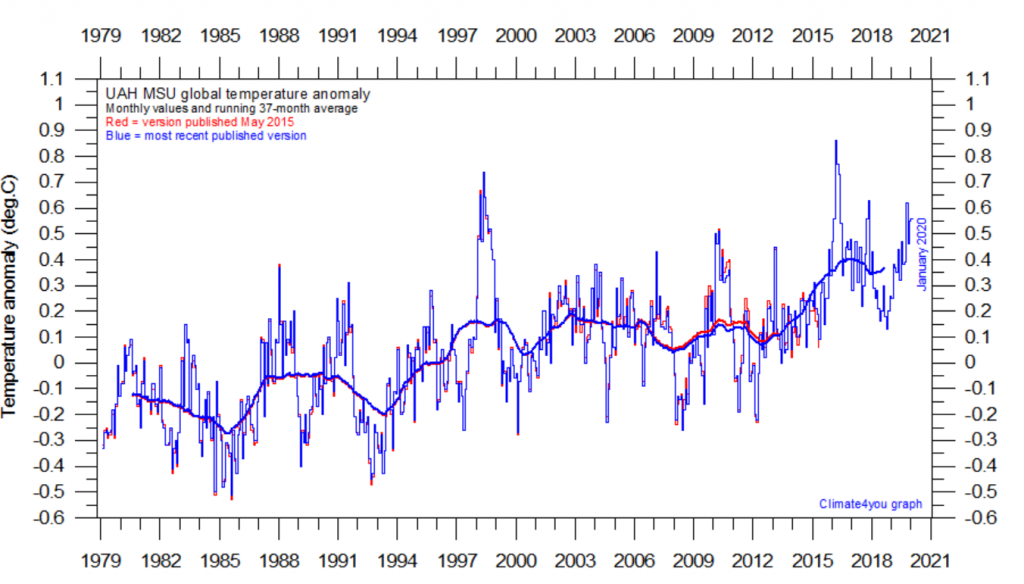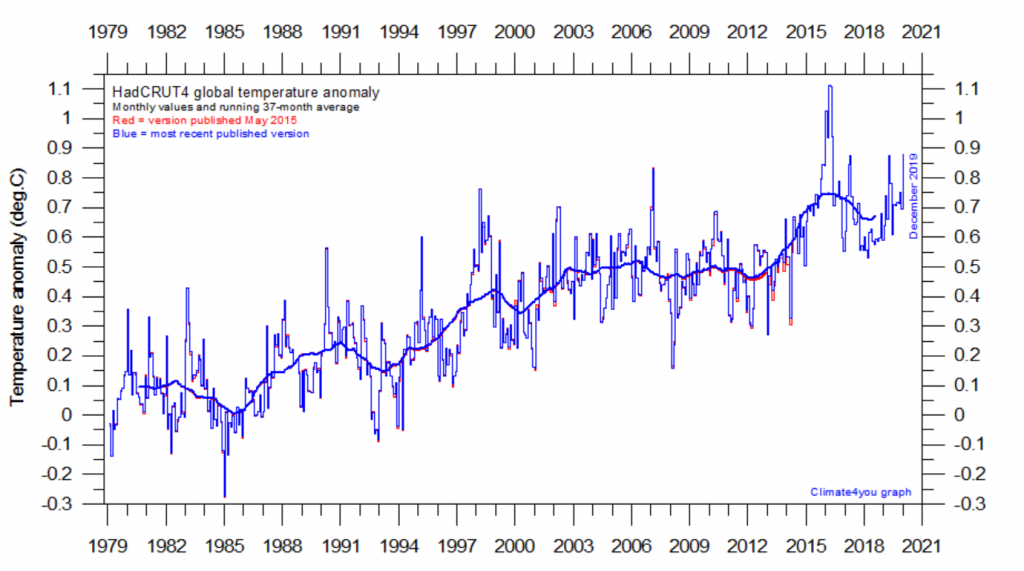The climate discussion is overwhelmingly dominated by the discussion about the influence of ![]() , which according the radiation transport equations describing the outgoing infrared radiation (OLR) has a certain influence on the earth’s radiation budget.
, which according the radiation transport equations describing the outgoing infrared radiation (OLR) has a certain influence on the earth’s radiation budget.
There are, however, more factors that need to be considered. The incoming energy flux, the SW insolation, is obviously of decisive importance. The actual amount of energy flux coming from the sun, the “solar constant” has proven to be extremely stable, but the global albedo, which decides how much solar flux enters the atmosphere, is an extremely important control parameter.
The dilemma about the earth’s albedo has been, that there is not a “nice theory” of how to determine it from a simple (possibly human induced) cause. On the contrary it involves many currently badly understood factors, some of which are, but others are not under human control:
- Clouds of different types at different altitudes,
- reflecting and scattering aerosols,
- influences on cloud generation, such as cosmic rays and magnetic fields,
- surface and atmospheric properties as a consequence of snow cover, urbanisation, agriculture, air pollution, etc.,
- possible feedback effects of temperature via water vapor.
Lacking a comprehensive theory, the influence of earth albedo has for a long time been neglected or ignored in the mainstream discussion.
But there is another approach. Satellite measurements have made it possible to actually measure the direct effect of albedo on the actual solar insolation. Recently a 30 year analysis has been published by J. Herman et al.: Net decrease in the Earth’s cloud, aerosol, and surface 340 nm reflectivity.
This careful analysis shows a clear, significant trend for the overall reflexivity, representing 75% of the earth’s total solar insolation (latitude -60…60 degree, smaller insolation and larger albedo near the poles):

The changed reflectivity has been converted into changes of SW incoming resp. reflected flux:

This means that in the 30 years from 1980 to 2010 the solar insolation flux has increased by ![]() . This albedo caused increase within 30 years is larger than the estimated forcing caused by the increase of
. This albedo caused increase within 30 years is larger than the estimated forcing caused by the increase of ![]() since the beginning of the industrialisation.
since the beginning of the industrialisation.
Based on the energy balance between incoming SW insolation ![]() and outgoing LW radiation by means of the Stefan-Boltzmann law
and outgoing LW radiation by means of the Stefan-Boltzmann law
![]()
![]()
![]()
During the same time of 30 years the estimated change of OLR flux due to
![]()
Due to the assumed constant lapse rate the temperature change at the surface is the same as the calculated temperature change which is somewhere in the mid troposphere.
There are 2 important and simple consequences from this obervation and calculations:
- The influence of
 accounts for 20% of the temperature change during the last 30 years, whereas the change of albedo accounts for 80% of the temperature change.
accounts for 20% of the temperature change during the last 30 years, whereas the change of albedo accounts for 80% of the temperature change. - Both forcings together would have created an average temperature change of 0.8 K. The actual change of global temperature is significantly less, depending on the institution measuring the temperature it is 0.48..0.55 K, which is slightly more than half of the forcing to retain SB-balance. Therefore there must be rather strong negative feedback, which reduces the effect of additional SW flux (from albedo) resp. diminished LW flux (from
 ) by appr. 50%. The most obvious and likely “feedback” is the buffering by heat absorption into and evaporation from the oceans, covering about 70% of the earth surface.
) by appr. 50%. The most obvious and likely “feedback” is the buffering by heat absorption into and evaporation from the oceans, covering about 70% of the earth surface.


For the ![]() sensitivity (Temperature change when doubling
sensitivity (Temperature change when doubling ![]() ) this feedback means that at 600 ppm we can expect a temperature change less than 0.5 degree K compared to pre-industrial times. This conclusion is drawn under the assumption, that albedo changes are independent of
) this feedback means that at 600 ppm we can expect a temperature change less than 0.5 degree K compared to pre-industrial times. This conclusion is drawn under the assumption, that albedo changes are independent of ![]() .
.
Obviously the question arises, what caused the decrease of the albedo. There is no clear answer to this currently. The size of the effect and the lack of a plausible theory appear to rule out the possibility that it is related to the global ![]() level. Currently it is more likely that there is a causal relation of influence on cloud generation from aerosols, sun activity and cosmic rays. But also factors of human influence through increasing surface absorption (“urban heat islands“, desertification ) are challenges for further research and constructive activity.
level. Currently it is more likely that there is a causal relation of influence on cloud generation from aerosols, sun activity and cosmic rays. But also factors of human influence through increasing surface absorption (“urban heat islands“, desertification ) are challenges for further research and constructive activity.

I found this article and the one on lapse rate very interesting and useful.